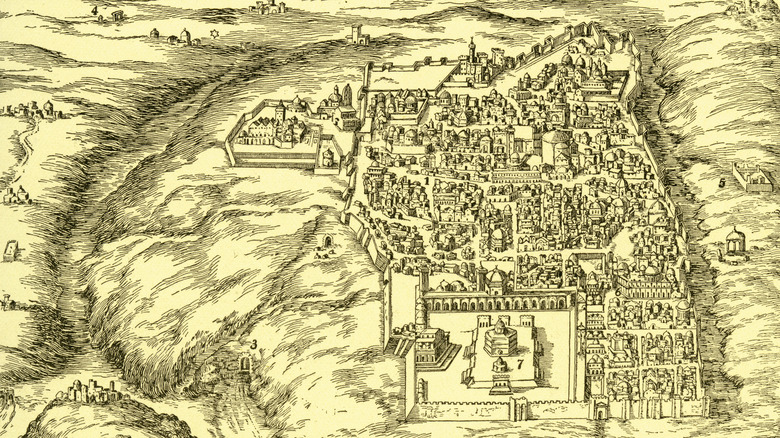Jesus Christ's Via Dolorosa Route May Not Have Actually Happened. Here's Why
A key narrative in the New Testament is that of Jesus' arrest, trial, and crucifixion –- his "Passion," as Christendom has taken to calling it. Specifically, the four gospels detail the gruesome way in which the prophet of Christianity was put to death in the most brutal and humiliating punishment the Romans could conceive — indeed, possibly one of the worst tortures ever designed in human history: crucifixion. Not only was Christ nailed to the cross and left there to suffer horribly for hours as he died, but prior to that, he was forced to carry the cross through the streets of Jerusalem, effectively being turned into a public spectacle before being put to death. Indeed, Luke 23 notes that at one point, the exhausted Jesus was unable to carry the cross, and a random bystander named Simon of Cyrene was forced to help him.
The route Jesus supposedly walked through Jerusalem has come to be known as the "Via Dolorosa," or "the way of suffering," and indeed, tour operators in the city, such as this one, will gladly take you on a tour of the route Christ supposedly walked. As it turns out, however, archaeologists have found that tradition and history haven't matched up in this case, and that the path that Christians have trod for centuries to honor Jesus may not have been his actual path.
Jesus likely walked a shorter route in the opposite direction.
The traditional Via Dolorosa winds through an ancient section of Jerusalem, according to NBC News, with pilgrims who walk it visiting 14 stations where key events in the crucifixion narrative supposedly took place.
However, it's the wrong route, says archaeologist Shimon Gibson (via CNN). To figure out the route that Christ walked, it's a matter of finding the location where he was sentenced to die, then finding the location of where he actually died, and connecting the dots. To make a long story short, both Gibson and Reverend Hector Patmore, a scholar on the life of Jesus at St. George's College in Jerusalem, have concluded that Jesus was tried at a different location than what Christendom has accepted for the past 2,000 years, meaning that the route he took was shorter and west-to-east rather than east-to-west (via NBC Chicago).
Patmore also notes that, though tourists might not actually be retracing Jesus' steps, they are participating in an act of piety with centuries of historical precedent. "This is a devotional route that's been walked for centuries by pilgrims, and when we walk here we're walking in the footsteps of centuries of pilgrims," he said.

